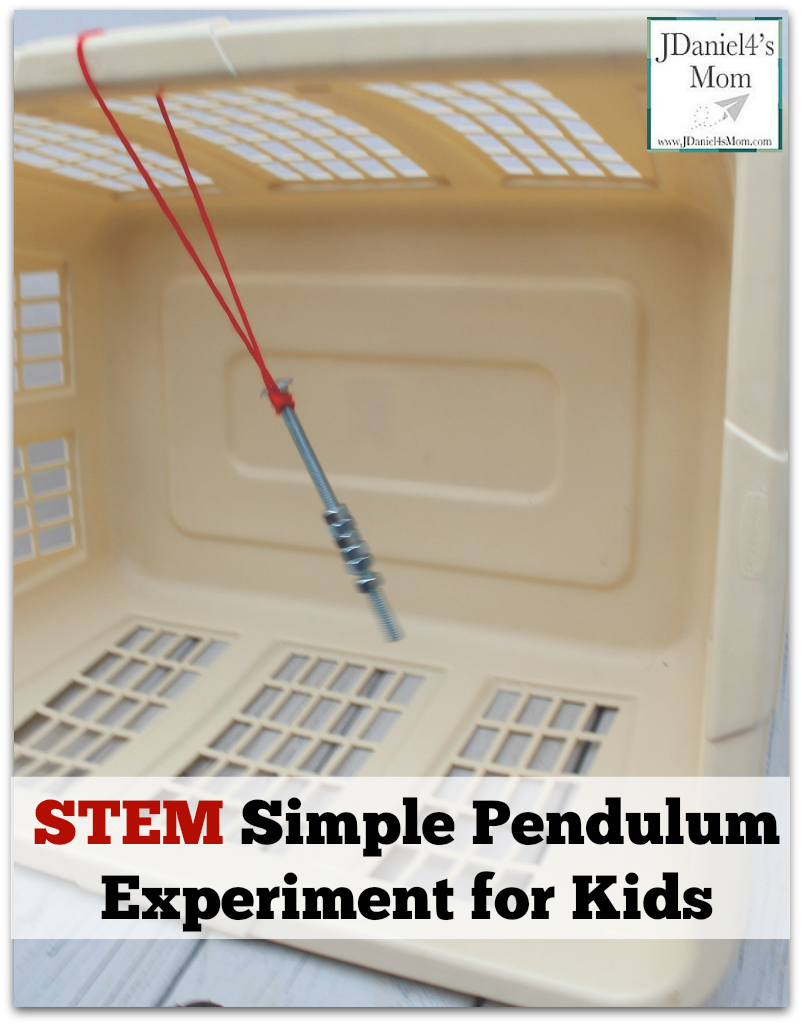
Children may have seen a pendulum swings back and forth on a grandfather clock. They may have even notice that the pendulum has a weight attached to it. My son and I recently did a STEM simple pendulum experiment to see if adding weight to the pendulum will make it swing slower or faster.
Our pendulum was a large bolt hanging from a laundry basket by a piece of yarn. I tried the knot attaching the yarn to bolt on one of side of the bolt. After threading the yard through the handle of the basket, the yarn was tied off on the other side of the bolt. I want the yarn to hang down straight.
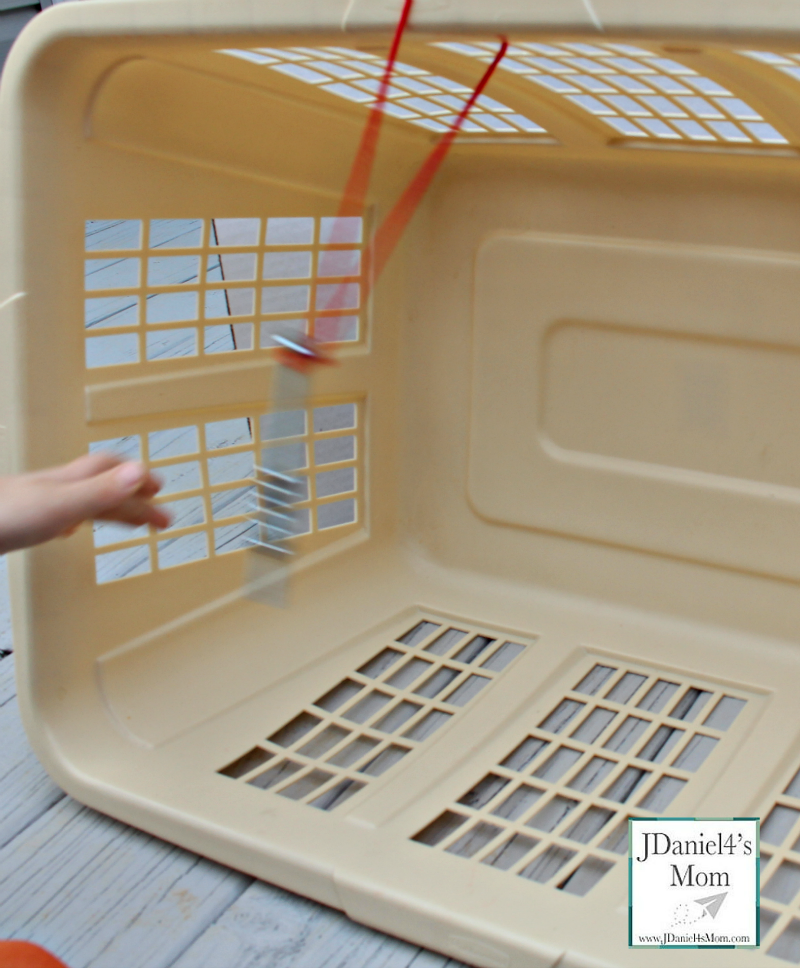
The laundry basket we used had a rectangular ridge on the bottom. We used the ridge on the left as a starting point and timed how long it took for the bolt to get to the ridge on the other side. The bolt wasn’t held inside the basket beside the ridge. We eyeballed where it started while holding the bolt near the outside of the basket.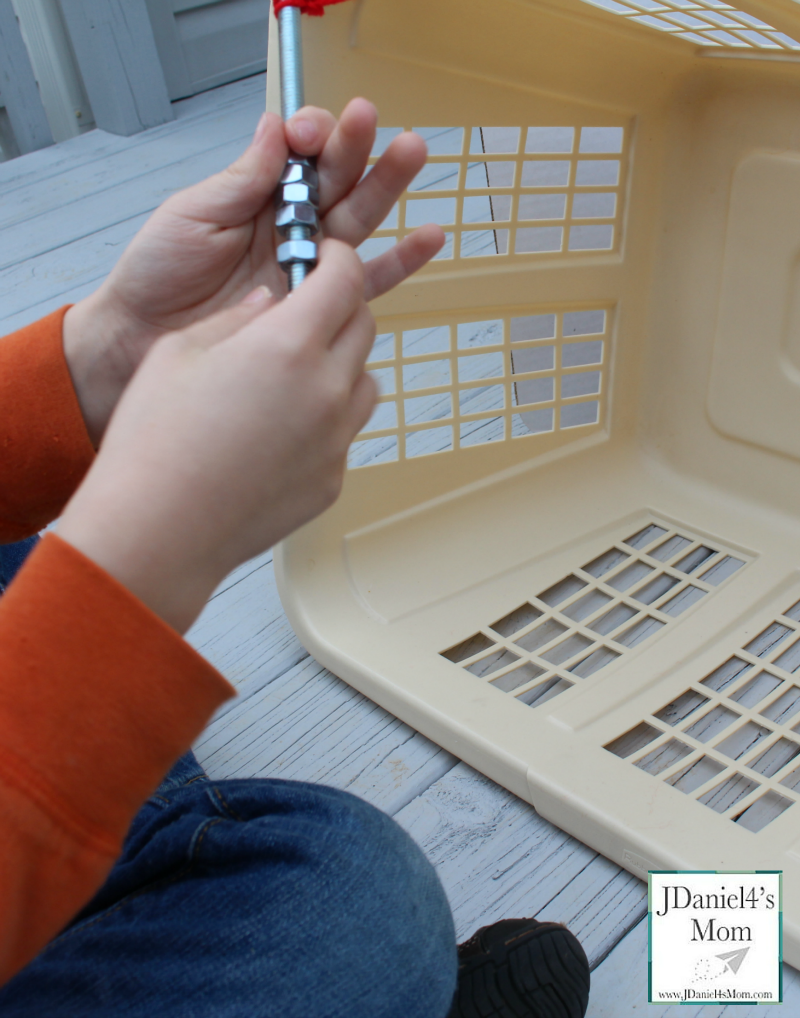
This process was repeated a number of times. Each time we added a nut to the bolt. (We kept the bolts near the bottom of the bolt.) Then we started its swing on the left and stopped the timer when it reached the ridge on the other side.
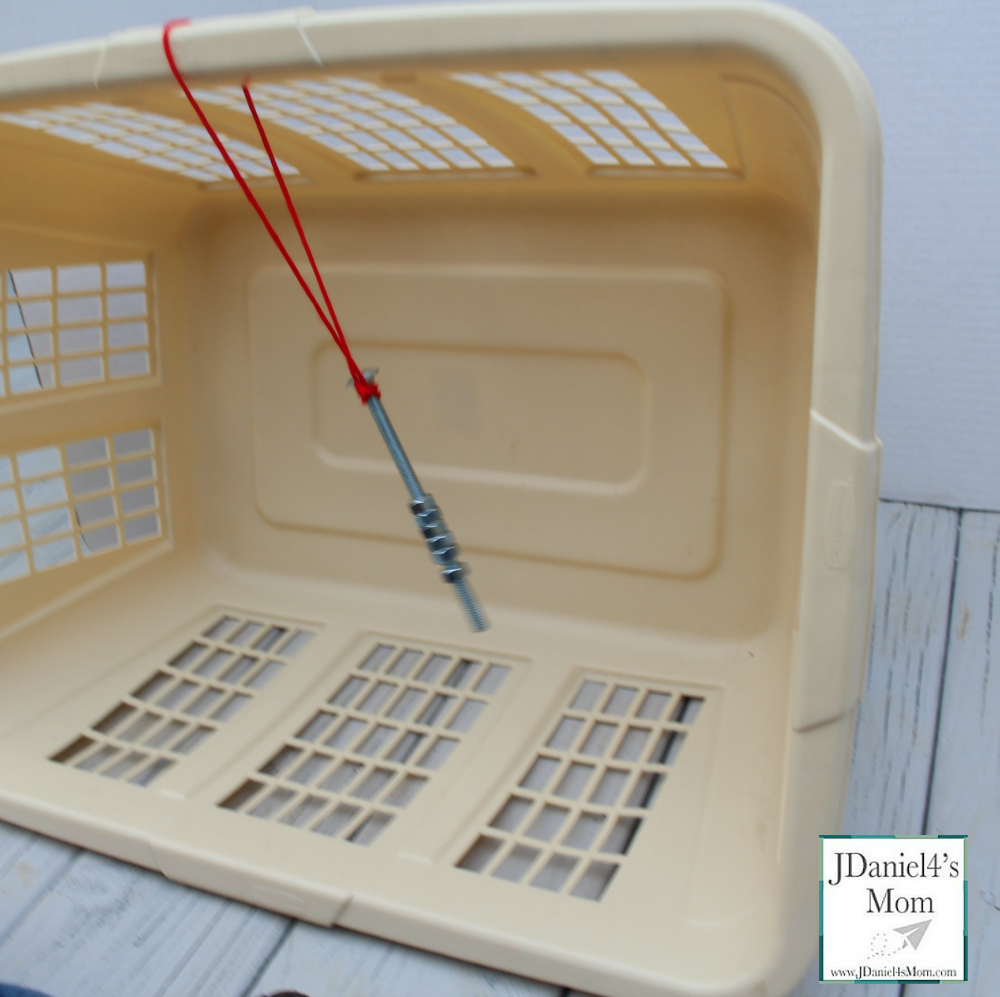
We noticed something surprising about the time it took the bolt to travel. Before we drew conclusions, we tried each bolt experiment again. This time was left some space between each of the nuts. That caused some of the bolts to move near the top of the bolt. (Remember the first time the nuts stayed near the bottom of the bolt.)
What did we find that was suprising? Adding weight to the pendulum didn’t change its speed. The placement of the weights didn’t effect its speed.
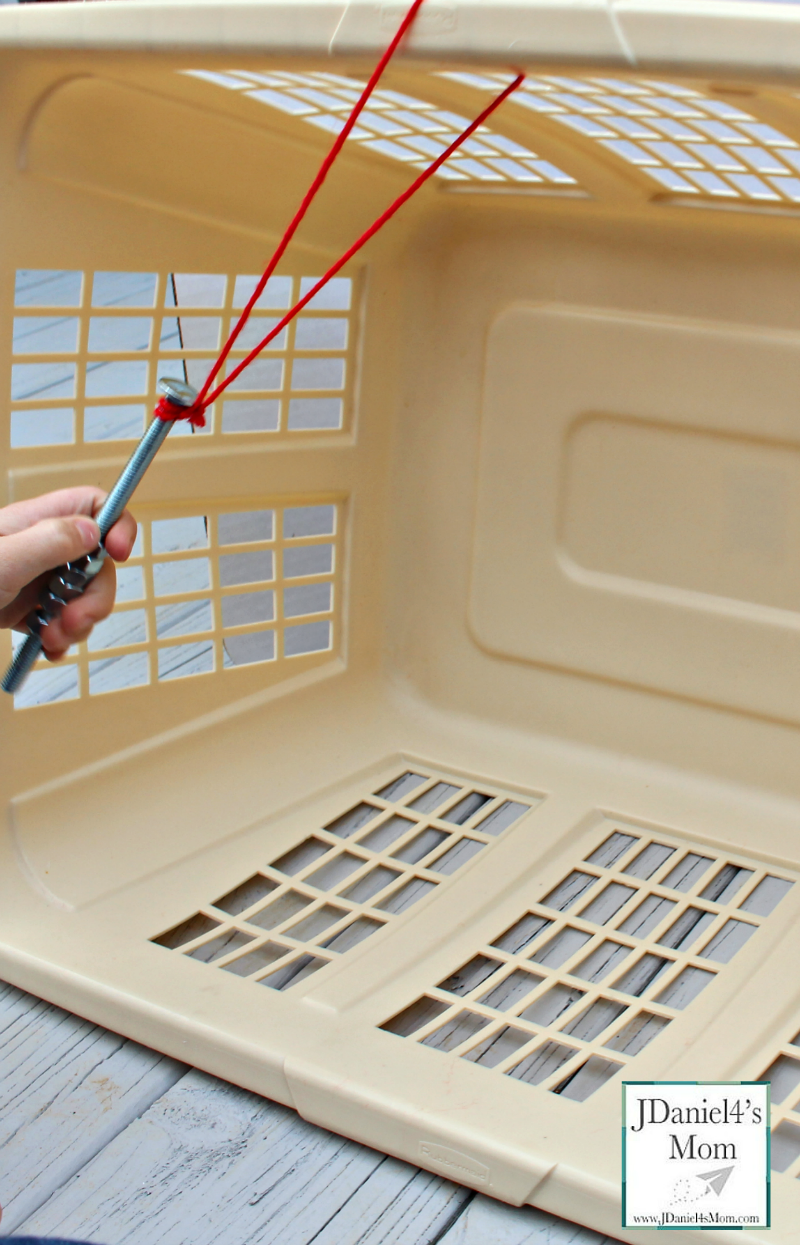
Why? I found the answer to this question on Physics Stack Exchange. More weight means more mass. Thus more force on it from gravity, but also more mass to move. That cancels out
The results of this STEM experiment featuring a simple pendulum really surprised us. I think we will need to do another STEM experiment with pendulums to find out if the length of the pendulum makes a difference.
You will find more science experiments like this simple pendulum experiment on my Early Learning Science board on Pinterest. Please take moment to check them out.

This is part of a series of STEM activities being shared on a number of wonderful blogs. For a full list of all the STEM activities including several more coding games please visit Left Brain Craft Brain. (They are hosting this wonderful event.)









What a creative idea! I love that this experiment uses things we already have in the house!